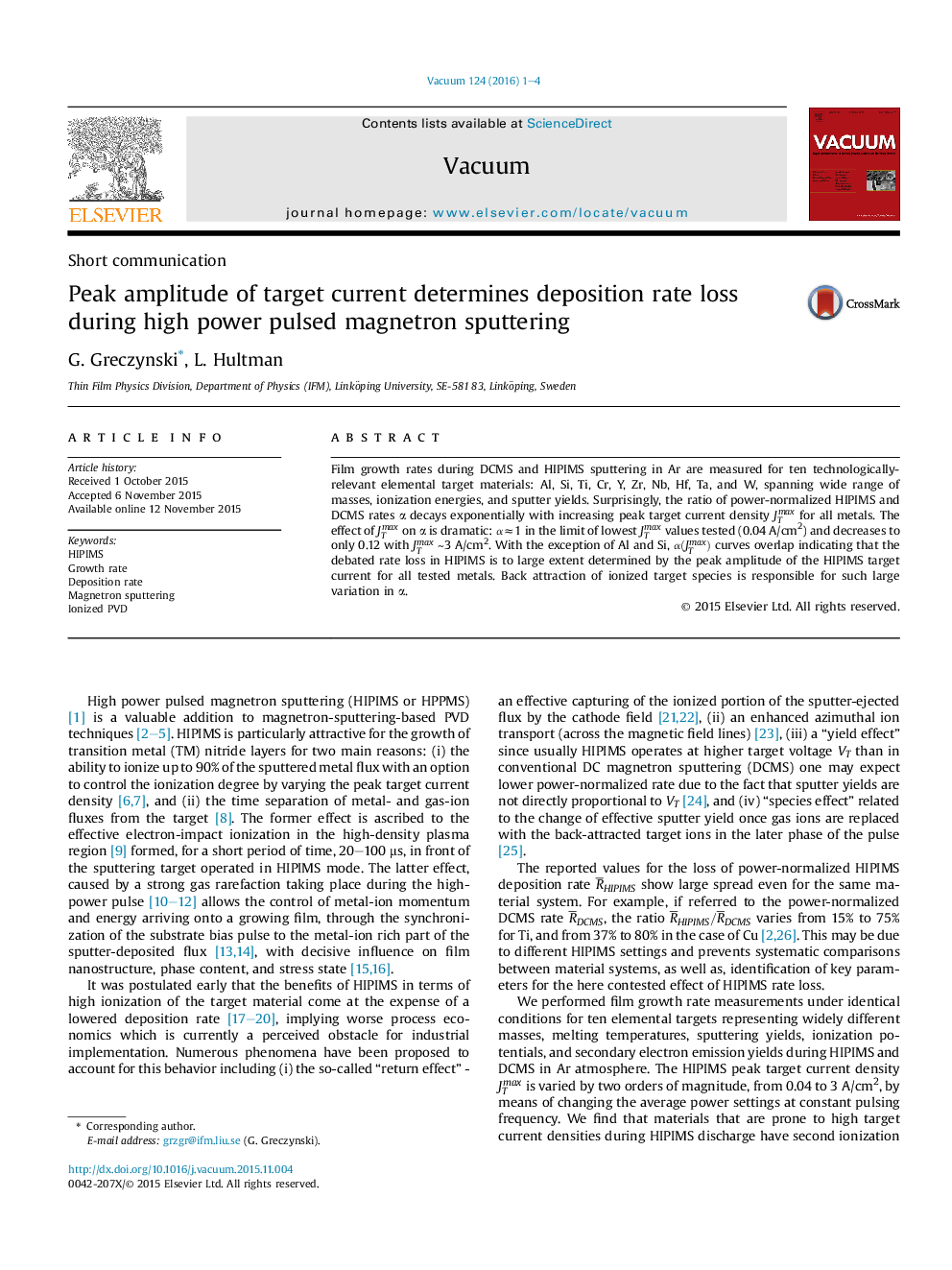| Article ID | Journal | Published Year | Pages | File Type |
|---|---|---|---|---|
| 1688195 | Vacuum | 2016 | 4 Pages |
•DCMS and HIPIMS growth rates are measured for ten technologically-relevant elemental target materials.•Power-normalized HIPIMS/DCMS rate ratio decays exponentially with increasing peak target current density for all metals.•Rate loss in HIPIMS is to large extent determined by the peak amplitude of the HIPIMS target current.•Back attraction of ionized target species is responsible for such large variation in HIPIMS/DCMS rate ratio.
Film growth rates during DCMS and HIPIMS sputtering in Ar are measured for ten technologically-relevant elemental target materials: Al, Si, Ti, Cr, Y, Zr, Nb, Hf, Ta, and W, spanning wide range of masses, ionization energies, and sputter yields. Surprisingly, the ratio of power-normalized HIPIMS and DCMS rates α decays exponentially with increasing peak target current density JTmax for all metals. The effect of JTmax on α is dramatic: α≈1α≈1 in the limit of lowest JTmax values tested (0.04 A/cm2) and decreases to only 0.12 with JTmax ∼3 A/cm2. With the exception of Al and Si, α(JTmax) curves overlap indicating that the debated rate loss in HIPIMS is to large extent determined by the peak amplitude of the HIPIMS target current for all tested metals. Back attraction of ionized target species is responsible for such large variation in α.
